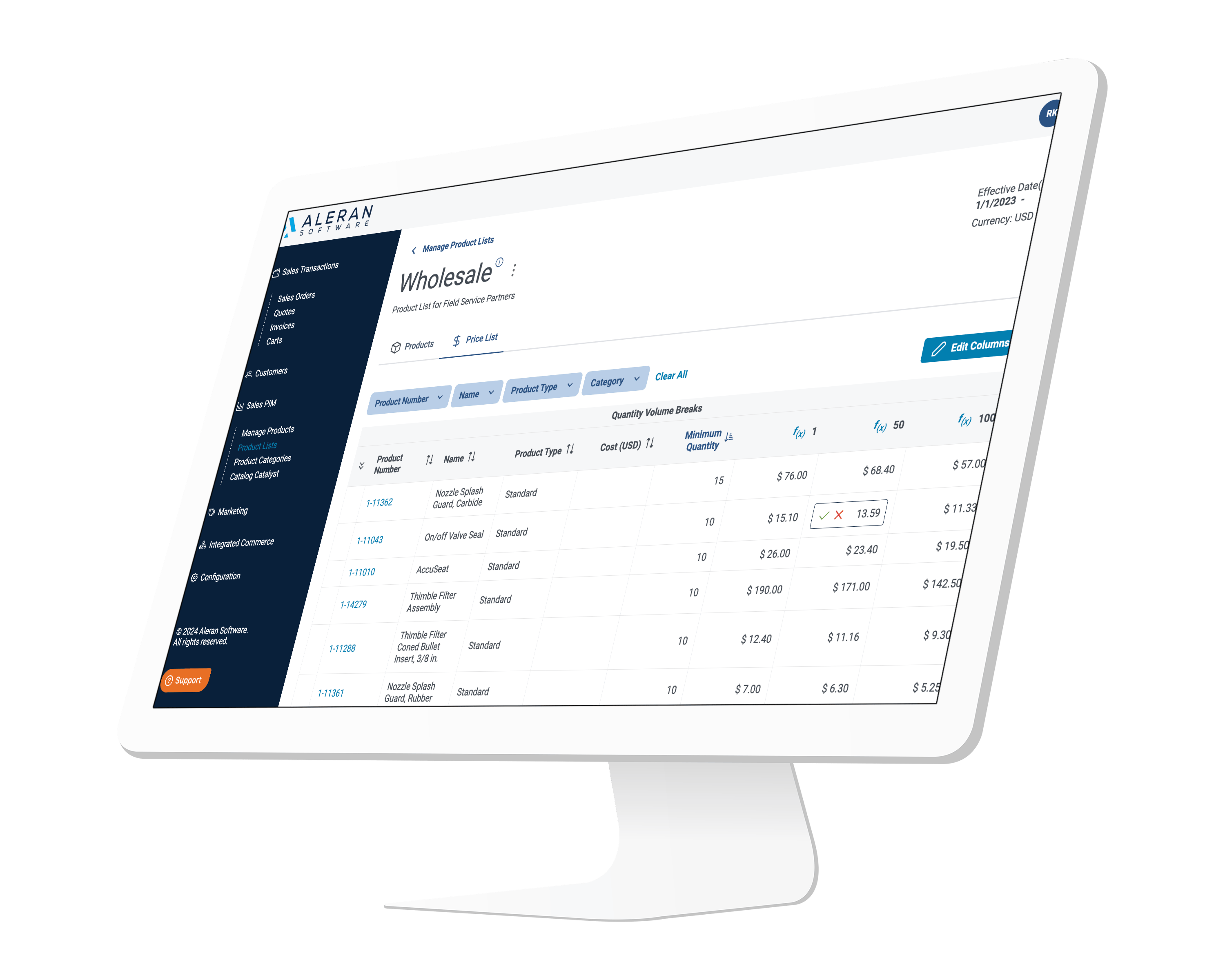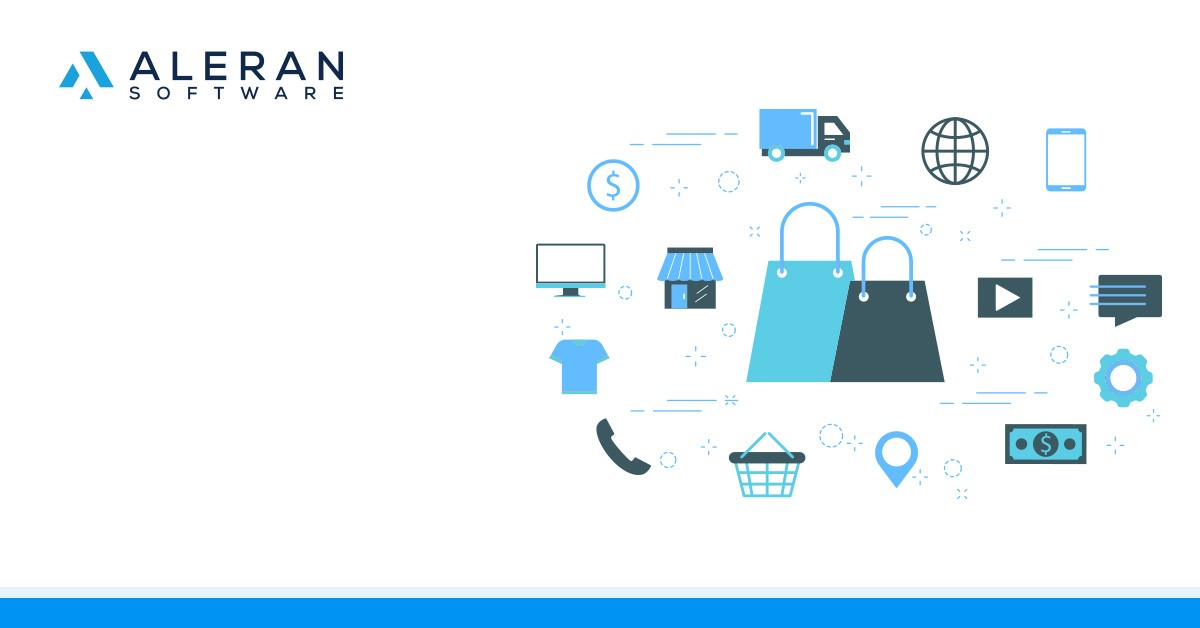Here’s a trivia question for you. What is the most important market for your retail company in 2022?
- Desktop browsers
- Mobile browsers
- Physical locations
- All of the above and more
The correct answer is, as you may have already guessed, all of the above and more. Today’s customers, whether they’re B2B or B2C, expect to get their products and services on demand, at the time and platform of their choosing. If your operations aren’t set up to satisfy that demand, you introduce friction to the buying experience, and there’s a greater risk that the customer will go elsewhere.
The successful retailer in 2022 embraces an omnichannel strategy, an anytime-anywhere way of doing business that puts the customer first by introducing availability on every possible channel.
But how do you make that pivot? In this article, we’ll explore how to develop an omnichannel strategy for 2022, emphasizing everything you need to achieve success in an increasingly fractured retail experience.
Think Mobile First
According to Perficient, mobile browsing accounted for a whopping 61% of internet traffic in 2020, up from even the year prior, when 57% of traffic came from mobile devices. If that trend continues, mobile traffic stands to take up two thirds of all internet traffic in just a couple years.
We’ll probably never reach a time when all internet traffic is mobile traffic, but there’s certainly no going back considering the ubiquity of the Smartphone. That means it’s imperative your business looks at its digital retail experience with a mobile-first mindset.
It’s far too easy to embark on development from and for a desktop, with mobile development happening secondarily, if it happens at all. Too many companies think that if they’re designing something to be responsive, then the desktop experience will be mimicked on mobile or require minimal tweaks.
Unfortunately, this usually leads to a subpar mobile experience. And if you’re doing the math, this means you could be alienating a significant portion of your prospective customer base. Formatting could be off, critical UX components could load slowly on LTE connections, and other issues can crop up.
You have to approach development with mobile at the forefront of your thoughts. Think about how mobile behaviors differ from desktop, and how the look and feel must change to accommodate those behaviors.
Creating an exceptional experience on mobile should be the first step for anyone serious about an omnichannel strategy.
Apptastic
Mobile, while important, is only the beginning. To really take your omnichannel strategy to the next level, you need an app that also puts the user experience (and your brand) front and center.
Apps are a crucial driver of loyalty, but like mobile browsing, they can actually have the opposite effect if they’re approached as an afterthought. Your app is an extension of your brand and the trust you’ve built with consumers. The act of downloading an app is symbolic and signifies future intent to purchase a product or service (and then continually use said service).
Eliminating friction and creating a seamless experience brings your customers into a like-minded community that, not coincidentally, also brings increased profits. Your app should have all the functions of your desktop experience, if not more. Things should load quickly with features intuitively appearing where and how the customer would expect.
Your customers should be able to buy products and services, file returns, reach customer service, and do anything else promised by your offerings all from your app. If not, ask yourself why, and see if you can get it on your 2022 roadmap.
Getting Vocal
While a relative niche market, voice-activated browsing is also important. There are customers for whom placing orders via Alexa Google or Siri is their preferred option due to the ease of use and convenience.
This may never be a crucial part of your business, but depending on what you offer, it could be a decent segment of revenue for your organization. Think about how you can offer an accessible voice experience, recognizing that’s it’s yet another extension of meeting prospective customers where they are.
Approach the Retail Giants Carefully
So far, we’ve mostly discussed ecosystems that you have control over. But there are many customers, especially in the B2C space, who purchase most of their products from the likes of Amazon, Etsy, eBay, Walmart, etc.
Before you enter the third-party marketplaces offered by these and other sellers, you need to run a careful analysis to see what they would mean for your business. These channels can bring significant revenue with the right mindset, but they can also become all-encompassing and, quite frankly, expensive.
The fees and shipping expectations of the online retail giants can be potentially harmful to your brand and even undercut you on other platforms. You have to think carefully and strategically about how the policies of these companies would affect your operations, your prices, and your relationship with your customers.
That’s not to say there isn’t value; there certainly is. Companies such as these can introduce you to an audience you may not reach otherwise, using their position in the market to lift you up as well. But you have to weigh those benefits against everything else and see how they would fit into your overall omnichannel strategy. Be wary that they don’t become the dominant means of reaching customers, as this can begin to negatively affect your own mobile, app, and desktop experiences.
Integrate Your Data Streams
Having a premier customer experience sounds great in practice, but we also recognize that this can compound the stresses on your team. Namely, every new channel creates its own new data stream that you have to parse and potentially compare and combine with every other stream.
It’d be wonderful if all these disparate channels utilized the same systems, but development rarely works that way. It’s not uncommon for an organization to come out with a desktop marketplace first, then mobile a while later, then an app, or an Amazon storefront, and now, oh shoot, the desktop experience is old, so we get a new replacement system for desktop and…
You can see how quickly you can accumulate programs and data that don’t always play nice with one another. In these scenarios, it’s important to take a step back and look closely at what you have and what you really need. You may be able to combine applications to create a single source of truth or retire legacy systems that are no longer optimized for the modern retail experience. Barring that, you can utilize APIs to transfer the data between systems, preserving the data’s integrity while allowing your team to use the information they need to succeed in their roles.
Whatever your eventual solutions, the more you can remove silos and unify your operations and data, the better your employee and customer experiences will be.
The Customer Is Always Right
Customers expect more today. If they place an order in an app, they want the option to return it in-store. If they buy something in-store, they want the ability to open a chat on their phone with a customer service representative to explain why there’s something incorrect on their receipt. If you provide software as a service and someone purchases ten seats for their company, they’re going to want their login information to carry over from an app to their desktop and phone.
The scenarios above are just a few of the endless permutations that confront the retailers of today. The customer doesn’t distinguish between the myriad channels in an omnichannel strategy; to them, a company is a company, and they expect seamlessness in the brand.
Your storefront on Amazon or Walmart is still your storefront, no different in the eyes of the consumer than your physical location up the street. They expect the same product, the same services, and the same retailer they trust with their business.
This puts a lot of expectations on the modern retailer; frankly, these expectations can be somewhat unrealistic, but they’re expectations nonetheless. You have your work cut out for you to meet the customer where they are, no matter where, and ensure that their interactions with your brand are the same regardless of the scenario.
Without an omnichannel strategy, it’s impossible to reach that goal. But if you can consider the approach outlined above, one that starts with mobile and then fans outward to embrace every prospective channel, with data across each, you can meet and exceed the customer’s expectations.
Ready to get started on your own omnichannel strategy? Explore Aleran for a suite of products and services that make the modern retailer’s life easier than ever, helping you provide the premium experience your customers depend on.



